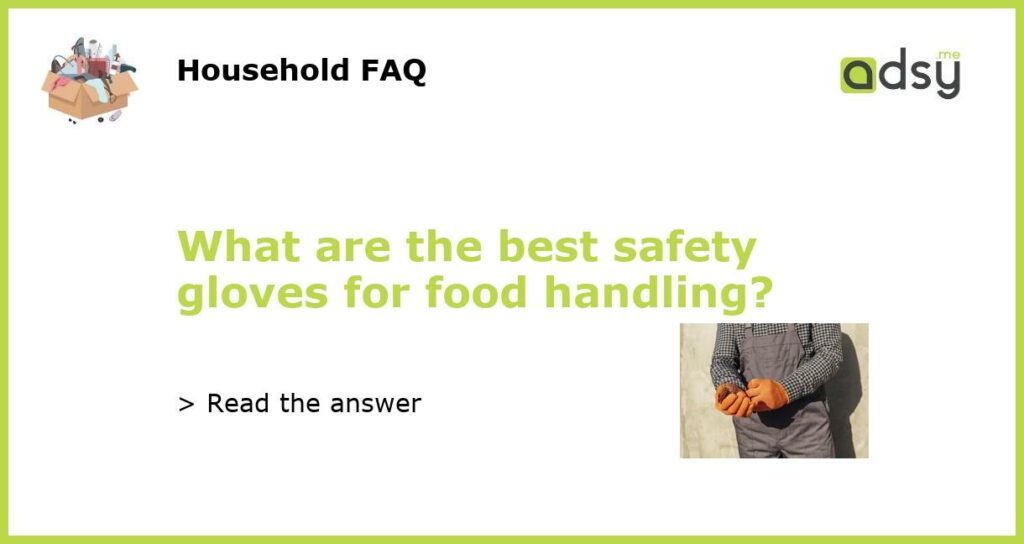Understanding the importance of safety gloves in food handling
When it comes to food handling, safety should always be a top priority. Whether you are working in a restaurant, a catering service, or a food processing plant, wearing the right safety gloves is essential to ensure the highest level of hygiene and prevent the spread of bacteria and contaminants. There are various types of safety gloves available, but it’s important to choose the ones that are specifically designed for food handling to meet the necessary safety and hygiene standards.
Nitrile gloves: the versatile and durable choice
Nitrile gloves have become a popular choice in the food industry due to their versatility and durability. These gloves are made from a synthetic rubber compound called nitrile, which offers excellent puncture resistance and barrier protection against chemicals, oils, and viruses. Nitrile gloves are also latex-free, making them a suitable option for individuals with latex allergies. They are available in various thicknesses to provide different levels of protection and can be easily disposed of after use, ensuring hygiene is maintained.
Vinyl gloves: the cost-effective and tactile option
Another popular type of safety gloves for food handling is vinyl gloves. These gloves are made from polyvinyl chloride (PVC) and are known for their cost-effectiveness and tactile sensitivity. Vinyl gloves are comfortable to wear and provide a good fit, allowing for easy dexterity when handling food. While they may not offer the same level of puncture resistance as nitrile gloves, they still provide a barrier against most contaminants. Vinyl gloves are a suitable choice for low-risk food handling tasks where frequent glove changes are required.
Latex gloves: the traditional and reliable choice
Latex gloves have long been a standard choice in various industries, including the food industry. These gloves are made from natural rubber latex and offer excellent elasticity, dexterity, and comfort. Latex gloves provide a reliable barrier against contaminants and are highly resistant to punctures. However, it’s important to note that some individuals may have latex allergies, which can cause skin reactions. For this reason, it’s essential to have alternative glove options available for individuals with latex allergies or sensitivities.
Considerations for choosing the best safety gloves for food handling
When choosing the best safety gloves for food handling, there are several factors to consider:
- Regulatory requirements: Ensure that the gloves you choose meet the necessary regulatory standards and certifications for food handling, such as those set by the Food and Drug Administration (FDA).
- Purpose: Consider the specific tasks involved in food handling and choose gloves that offer the appropriate level of protection and comfort.
- Allergies and sensitivities: Take into account the potential for latex allergies and provide alternative glove options for individuals who are allergic to latex.
- Disposable vs. reusable: Decide whether disposable gloves or reusable gloves are more suitable for your needs. Disposable gloves offer convenience and hygiene benefits, while reusable gloves may be more cost-effective in certain situations.
- Comfort and fit: Ensure that the gloves fit well and provide a comfortable wearing experience, as this is crucial for maintaining dexterity and preventing hand fatigue during food handling tasks.
In conclusion, the best safety gloves for food handling can vary depending on individual needs and requirements. Nitrile gloves, vinyl gloves, and latex gloves are all commonly used options, each with their own advantages and considerations. Ultimately, choosing the right gloves involves considering regulatory standards, specific tasks, allergies, and comfort to ensure the highest level of safety and hygiene in food handling.






